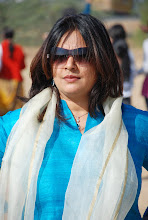1. Use worksheets appropriate to a child's level. Give an easy worksheet for each concept, immediately after you teach that concept.
 3. Worksheets are best when they are well constructed with appropriate
clip art/ pictures related to the topic being taught. Ensure that u cover all
the points that you have taught. Reinforce when you work at the worksheet
together.
3. Worksheets are best when they are well constructed with appropriate
clip art/ pictures related to the topic being taught. Ensure that u cover all
the points that you have taught. Reinforce when you work at the worksheet
together.- Fresh or dried fruit
- Sandwich bags
- Pictures of fruit
- Picture books about fruit
You will need
a round balloon
newspaper
1 cup flour
1 cup cold water
4 cups boiling water
pencil
green and blue paint
paint brushes
atlas or globe
Method
1. In a large pot mix the flour and cold water until the mixture is thin and runny.
2. Stir in the boiling water and allow the mixture to simmer on the stove briefly and then set it aside to cool.
3. Tear the newspaper into long strips about as wide as a ruler.
4. Blow up the balloon and knot it tightly.
Cover the balloon and Paint the land and the seas
5. When the flour glue has cooled adequately, carefully dip each strip of newspaper into it, wipe off the excess glue and wrap it around the balloon.
6. Cover the entire balloon with strips of paper and then place it in a safe place to dry overnight (or for about 8 hours). We stood ours in a plastic bowl.
7. Cover the balloon with two more layers of paper strips, allowing each layer to dry inbetween.
8. When the third layer has dried, using an atlas or globe as a guide, draw the continents on your globe with a pencil.
9. Place some newspaper on your worktop and paint the land and the seas. Use one color at a time.
Variation
While doing this project you could do as we did and also make a papier maché piggy bank.
1.After covering your balloon with one layer of paper strips, add feet, ears and a nose cut from a cardboard egg carton and secure them with masking tape.
2. Complete the last two layers.
3. Paint your piggy bank pink.
4. Add a curly tail and cut a slit in the top for coins.














